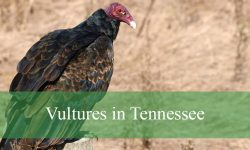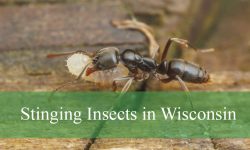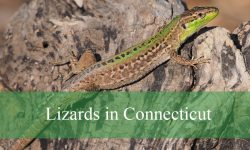Walking through a blooming garden or forest edge in Oregon, it’s impossible not to notice the quick flashes of color and the whirring wings of hummingbirds. These tiny birds bring an energy that feels almost magical, darting between flowers and hovering effortlessly as they feed. Spotting one up close can be an unforgettable experience, whether it’s a bright Rufous or the shimmering pink crown of an Anna’s Hummingbird.
Oregon is home to a surprising diversity of hummingbirds. Some, like Anna’s, stay throughout the year, while others migrate thousands of miles just to pass through the state each summer. For birdwatchers, backyard gardeners, and nature lovers alike, identifying these species adds another layer of wonder to every outdoor adventure.
Types of Hummingbirds Found in Oregon
Anna’s Hummingbird (Calypte anna)
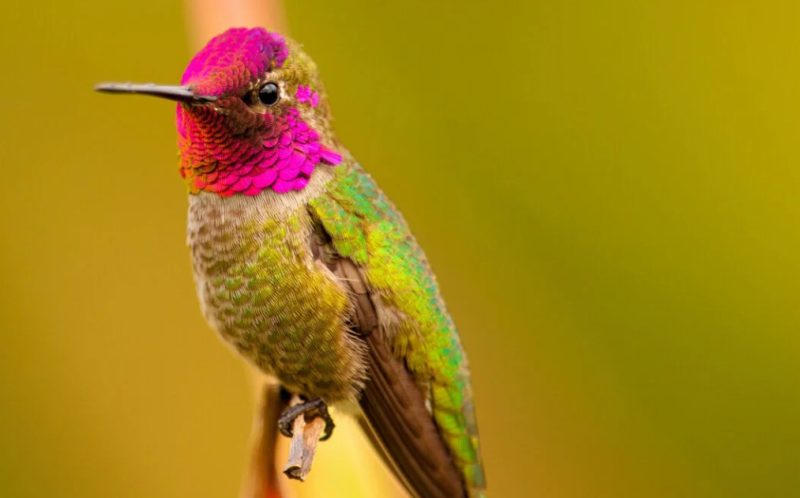
Anna’s Hummingbird is the most common and widespread hummingbird in Oregon, and unlike most other species, it is a year-round resident. This bird is medium-sized compared to other hummingbirds, measuring about 3.9 to 4.3 inches in length with a wingspan of 4.7 inches. Males are particularly striking, with iridescent rose-pink gorgets and crowns that shine brilliantly in the sunlight. Females, on the other hand, are less colorful but still display some pink on their throats along with green and gray plumage, making them identifiable even without the males’ vivid brilliance.
This species is well adapted to urban and suburban environments, often seen in gardens, parks, and neighborhoods where flowering plants are abundant. They frequently visit backyard feeders stocked with sugar water, which supplements their natural diet of nectar and small insects. Their ability to thrive in human-modified landscapes has contributed to their steady population growth in Oregon. Because they do not migrate, they are especially visible during the colder months when other hummingbirds are absent.
Anna’s Hummingbirds are known for their remarkable courtship displays, where males ascend high into the sky and then dive rapidly, producing a loud chirping sound with their tail feathers. They are fiercely territorial, often chasing away not only other hummingbirds but also much larger birds from their feeding areas. Their energetic behavior and fearlessness make them one of the easiest species to observe closely in Oregon.
In terms of nesting, females take on the full responsibility of raising the young. They build tiny cup-shaped nests using plant fibers, spider webs, and lichens, usually placed on tree branches or shrubs. These nests are expandable, allowing them to accommodate growing chicks. Their breeding season can begin as early as December in Oregon, giving them a unique advantage over other migratory hummingbird species.
Rufous Hummingbird (Selasphorus rufus)
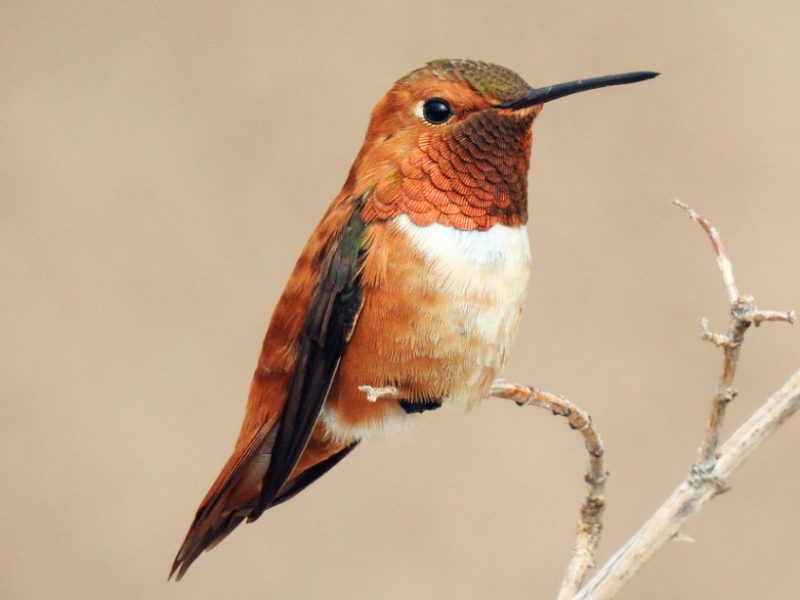
The Rufous Hummingbird is a dazzling summer visitor to Oregon, recognized for its fiery orange plumage that sets it apart from other hummingbirds. Males display a brilliant reddish-orange gorget and an overall rufous-colored body, while females and juveniles are more subdued with green backs and rufous flanks. Measuring around 2.8 to 3.5 inches in length, they are slightly smaller than Anna’s but much more aggressive despite their size. Their bold coloration and feisty nature make them one of the most memorable hummingbirds to encounter in Oregon.
This species is famous for its incredible long-distance migration, traveling up to 4,000 miles each year between Mexico and Alaska. In Oregon, they typically appear from March through August, where they breed and take advantage of the state’s wildflower blooms. They are most often seen in meadows, forest edges, and mountain slopes, especially where flowering plants are abundant. Rufous Hummingbirds are also frequent visitors to feeders, though they are notorious for chasing away other hummingbirds to monopolize food sources.
Rufous Hummingbirds have a varied diet consisting of nectar, insects, and spiders. They play an important role as pollinators, transferring pollen between flowers as they feed. Their foraging behavior is fast and aggressive, and they are relentless in defending territories, sometimes even confronting much larger birds. Their buzzing flights and constant aerial chases add excitement to any backyard or natural habitat where they appear.
When breeding in Oregon, females construct tiny nests covered in lichens and moss, often situated on low tree branches or shrubs. They lay two white eggs per clutch and raise the chicks alone. Once summer ends, Rufous Hummingbirds embark on their extraordinary southward journey, passing through Oregon once again in late summer and early fall before continuing toward their wintering grounds in Mexico.
Calliope Hummingbird (Selasphorus calliope)
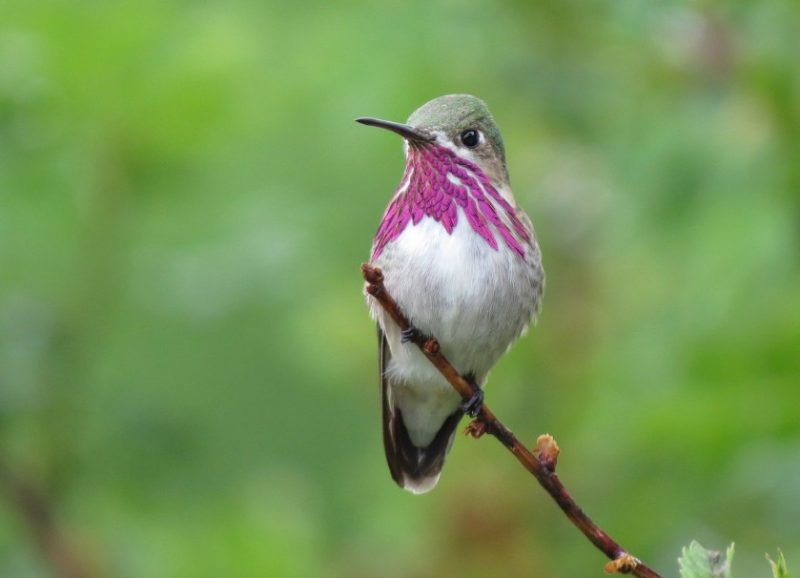
The Calliope Hummingbird is the smallest bird in North America, measuring just 3 inches in length and weighing less than a penny. Despite its tiny size, it is a resilient traveler, migrating thousands of miles between Central America and its northern breeding grounds. Males are easily recognized by their striking magenta streaks on the throat that form a fan-like pattern, while females have a simpler appearance with greenish backs and whitish underparts. Their delicate build and distinct markings make them a special sight in Oregon during migration.
In Oregon, Calliope Hummingbirds are typically seen during spring and fall migration as they pass through the state on their way to breeding grounds in the northern Rockies and interior western North America. They favor mountain meadows, forest clearings, and shrublands where wildflowers bloom in abundance. Though not as common as Anna’s or Rufous, they can sometimes be observed at backyard feeders in both rural and mountainous areas.
Calliope Hummingbirds feed primarily on nectar, but insects provide them with vital protein. Their small size allows them to hover with remarkable agility, often visiting clusters of tiny tubular flowers that larger hummingbirds might overlook. They are less aggressive than Rufous Hummingbirds but will still defend valuable feeding spots, especially during migration when energy conservation is critical.
Breeding takes place outside Oregon, but females follow similar nesting habits to other hummingbirds, using spider silk and plant materials to construct expandable nests. Their long migration, relative to their body size, is considered one of the most impressive feats in the bird world. Spotting a Calliope Hummingbird in Oregon is always a treat, as it offers a brief glimpse of one of nature’s most extraordinary travelers.
Black-chinned Hummingbird (Archilochus alexandri)
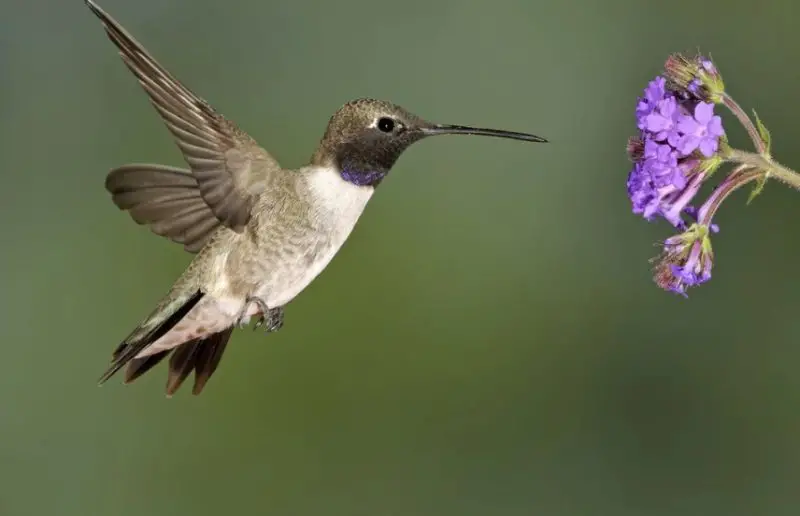
The Black-chinned Hummingbird is a summer resident in Oregon, most often found in the eastern and southern parts of the state. It is a medium-sized hummingbird, measuring about 3.5 inches long with a slender body and relatively long, straight bill. Males can be identified by their dark gorget that appears black in most light but flashes a brilliant purple at the right angle. Females are plainer, with greenish upperparts and pale underparts, making them harder to distinguish from similar species.
This species is adaptable and can be seen in a variety of habitats, including desert scrub, open woodlands, riparian corridors, and even urban areas with gardens and feeders. In Oregon, they are most common during the warmer months, typically arriving in late spring and departing by early fall. Their preferred habitats often overlap with those of Rufous Hummingbirds, leading to frequent territorial disputes around feeders and flowering areas.
Black-chinned Hummingbirds feed mainly on nectar from native and ornamental plants, but they also consume small insects and spiders. Their feeding behavior includes rapid hovering and side-to-side movements that allow them to exploit flowers efficiently. They are known for their distinctive vocalizations and wing sounds, with males often producing a sharp, high-pitched trill during flight. This auditory trait can help birdwatchers identify them even before they are seen.
When it comes to nesting, females build small cup-shaped nests in sheltered spots, often on tree branches near water sources. They lay two eggs and care for the young without assistance from the males. Their populations are stable, and their adaptability to human-influenced landscapes helps them thrive. In Oregon, they add diversity to the hummingbird population and are particularly appreciated in the drier regions where fewer species are found.
Allen’s Hummingbird (Selasphorus sasin)
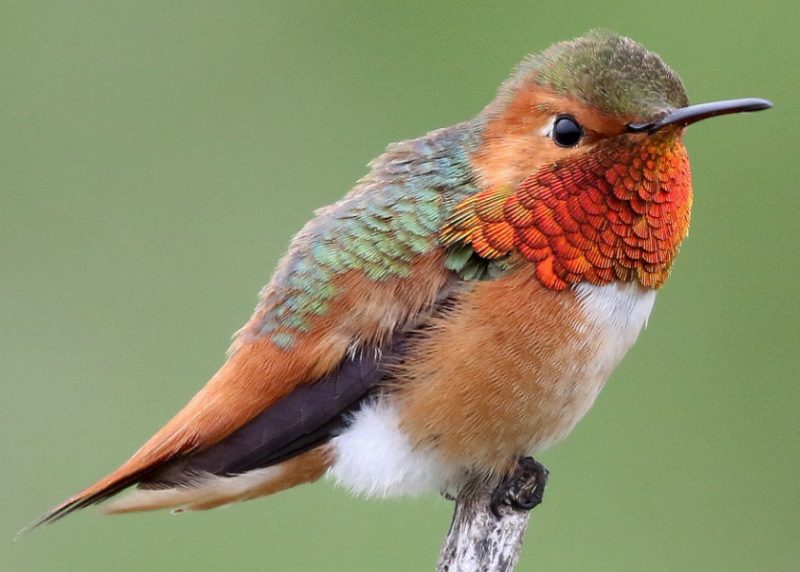
Allen’s Hummingbird is considered a rare visitor in Oregon, typically appearing during migration. This species closely resembles the Rufous Hummingbird, which often causes identification challenges for birdwatchers. Males display a brilliant orange body with an iridescent red throat, while females are primarily green above with pale underparts and rufous flanks. They measure about 3 to 3.5 inches in length and possess a rapid, direct flight style that makes them both swift and striking when seen in the field.
In their typical range, Allen’s Hummingbirds are most abundant along the Pacific Coast of California, where they breed. In Oregon, sightings are sporadic and usually occur along the southern coast or during migration periods in spring and late summer. They are often attracted to flower-filled gardens and feeders, where they can briefly stop to refuel before continuing their journey. These brief appearances make them a special highlight for dedicated birdwatchers in Oregon.
Their diet consists primarily of nectar from tubular flowers, but they also consume small insects to supplement their energy needs. Like other hummingbirds, they are active foragers, darting between blooms and hovering gracefully in mid-air. They are highly territorial during the breeding season, with males performing elaborate display dives to court females or chase away intruders.
While breeding does not generally occur in Oregon, females elsewhere construct delicate nests using spider silk and plant fibers, camouflaging them with lichens. Their limited and unpredictable presence in Oregon underscores their rarity in the state, making any confirmed sighting of Allen’s Hummingbird an exciting event for the local birding community.
Costa’s Hummingbird (Calypte costae)
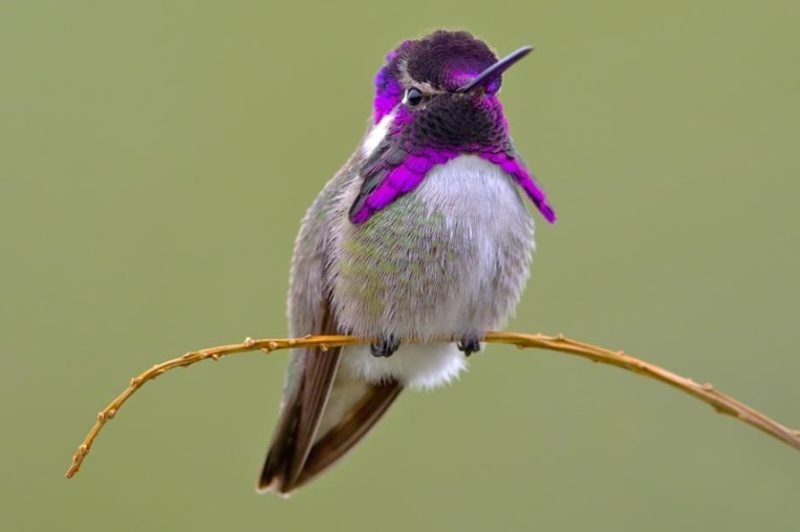
Costa’s Hummingbird is another rare species occasionally observed in Oregon, though it is far more common in the deserts of the southwestern United States and northern Mexico. This species is small, averaging about 3 to 3.5 inches in length. Males are easily recognized by their brilliant violet crown and throat feathers, which flare outward like a mustache when viewed in the right light. Females are less colorful, with grayish underparts and green backs, but still share the compact size and structure typical of hummingbirds.
In Oregon, Costa’s Hummingbird sightings are rare and usually restricted to southern regions of the state. They may appear in arid areas or near gardens with flowering plants, particularly during spring migration. Their preferred habitats are desert scrub and dry open landscapes, which makes Oregon an unusual but possible stopover point during their movements northward.
Their diet mirrors that of other hummingbirds, relying on nectar for energy and insects for protein. Males are known for their elaborate courtship displays, which include steep, looping dives while producing a distinctive high-pitched sound. These displays, though rarely observed in Oregon, are a hallmark of the species in its native desert habitats.
Costa’s Hummingbirds are solitary nesters, with females building tiny nests decorated with plant down and spider silk. In their core range, breeding occurs in early spring to take advantage of desert wildflower blooms. Their occasional presence in Oregon is considered accidental or irregular, but birders always hope to catch a glimpse of their dazzling purple crown during migration.
Broad-tailed Hummingbird (Selasphorus platycercus)
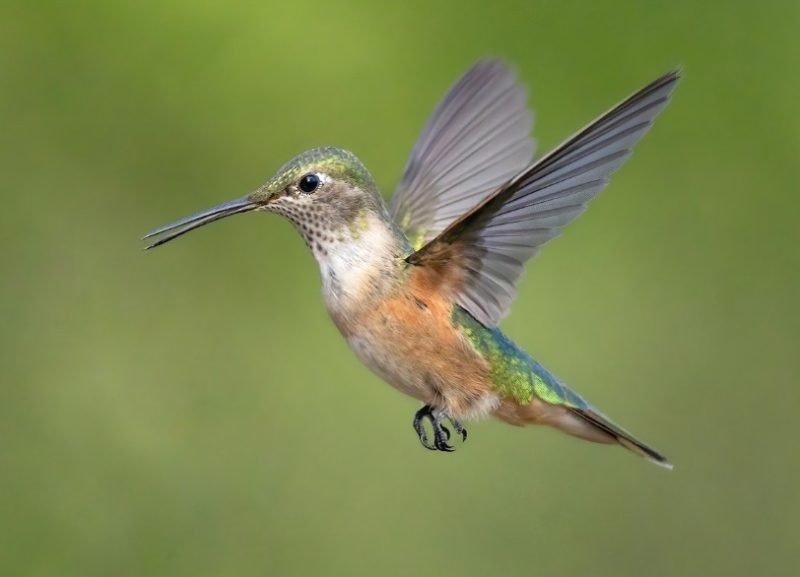
The Broad-tailed Hummingbird is a rare but possible summer visitor to Oregon, especially in mountainous areas. It is medium-sized for a hummingbird, measuring about 3.5 to 4 inches long. Males are striking with a shimmering rose-red throat set against a green back and whitish underparts, while females and juveniles appear more subdued with green upperparts and pale, speckled throats. One of their most distinctive features is the loud trilling sound produced by their wings during flight, which makes them easier to detect even before they are seen.
This species typically breeds in the Rocky Mountains and other high-elevation regions of the western United States. In Oregon, they may be spotted in mountain meadows, forest edges, or alpine habitats during summer, particularly where wildflowers are abundant. Though not common, their presence adds diversity to the hummingbird population in Oregon’s highlands.
Broad-tailed Hummingbirds feed mainly on nectar but supplement their diet with insects caught in mid-air or plucked from foliage. Their long tongues and hovering abilities allow them to exploit a wide range of flower types. They are known for being territorial around food sources, though not as aggressive as Rufous Hummingbirds. Their trilling wingbeats often alert birders to their presence in open meadows.
Females are responsible for nesting, constructing small cup-shaped nests lined with soft plant material and spider webs. They typically raise two chicks per brood, relying on the abundance of high-elevation wildflowers to provide sustenance. Though rare in Oregon, spotting a Broad-tailed Hummingbird is always memorable due to their vibrant plumage and distinctive flight sounds.
Broad-billed Hummingbird (Cynanthus latirostris)
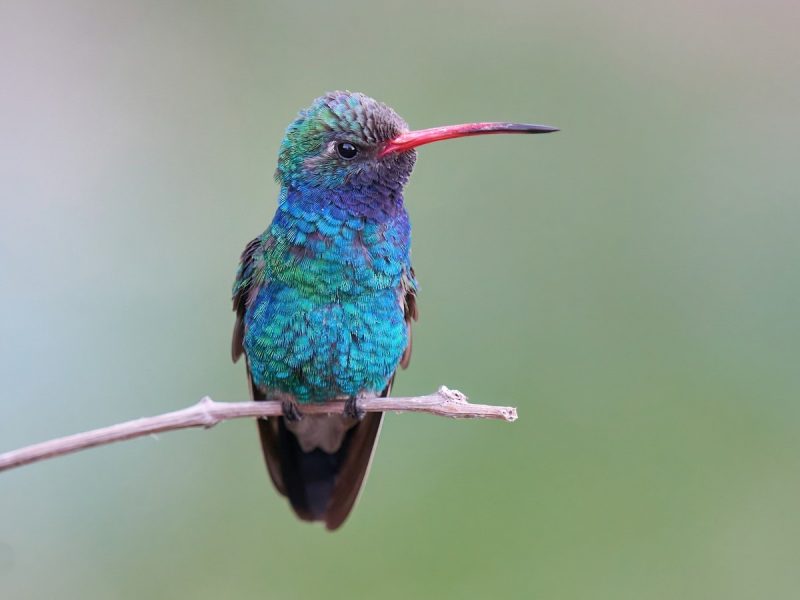
The Broad-billed Hummingbird is one of the rarest hummingbirds ever recorded in Oregon. This species is primarily found in the southwestern United States, Mexico, and Central America, making its occasional appearance in Oregon an exceptional occurrence. It is medium-sized, around 3.5 to 4 inches in length, and is easily distinguished by its vivid coloration. Males have bright metallic green plumage with a striking blue throat and a long, straight red bill tipped with black, while females are duller with green backs and pale underparts.
In their usual range, Broad-billed Hummingbirds favor riparian areas, desert canyons, and gardens with abundant flowering plants. In Oregon, sightings are extremely rare and generally occur only in the southern or western regions, often near hummingbird feeders that provide a reliable food source. Because they are far from their core distribution, individuals that reach Oregon are usually considered accidental wanderers.
Their diet consists of nectar from tubular flowers, which they extract using their specialized tongues, and small insects that provide protein. Males are known for their bold and active foraging behavior, often returning to the same flower patches repeatedly. Their vibrant colors and distinctive bill make them easier to identify compared to other rare hummingbird species that occasionally visit Oregon.
Breeding in Oregon is highly unlikely, as their nesting range is much farther south. In their native habitats, females build small, delicate nests close to water sources, laying two tiny white eggs. The Broad-billed Hummingbird’s rare appearances in Oregon are prized sightings for bird enthusiasts, offering a rare chance to witness a species that is normally associated with the deserts of Arizona and Mexico.
FAQs about Hummingbirds in Oregon
How many species of hummingbirds can be seen in Oregon?
Oregon hosts around eight regularly observed species of hummingbirds, though some are far more common than others. Anna’s Hummingbird is the only year-round resident, while species like Rufous and Black-chinned Hummingbirds appear seasonally. Others, such as Allen’s, Costa’s, Broad-tailed, and Broad-billed Hummingbirds, are considered rare or accidental visitors, making them special finds for birdwatchers.
What is the most common hummingbird in Oregon?
Anna’s Hummingbird is the most common and widespread species in Oregon. Unlike migratory hummingbirds, Anna’s remain in the state throughout the year, even during the winter months. They thrive in gardens, urban parks, and natural areas, where they visit feeders and flowering plants regularly.
When is the best time to see hummingbirds in Oregon?
The best time to see hummingbirds in Oregon is from spring through late summer, when migratory species pass through or breed in the state. Rufous Hummingbirds arrive as early as March and depart by August, while Black-chinned and Calliope Hummingbirds are typically seen during summer. Anna’s Hummingbirds, however, can be seen all year long.
Where can I find hummingbirds in Oregon?
Hummingbirds in Oregon can be found in a wide range of habitats, including backyards, forests, meadows, coastal areas, and mountain regions. Rufous Hummingbirds are often spotted in open meadows and woodland edges, while Calliope Hummingbirds are more likely to be found in mountain meadows during migration. In drier parts of eastern Oregon, Black-chinned Hummingbirds are more commonly seen.
What do hummingbirds eat in Oregon?
Hummingbirds feed mainly on nectar from flowers and feeders, but they also consume insects and spiders for protein. In Oregon, they take advantage of both native wildflowers and garden plants such as fuchsias, salvias, and columbines. Sugar-water feeders are also a reliable food source, particularly for Anna’s Hummingbirds during the colder months.
How can I attract hummingbirds to my yard in Oregon?
You can attract hummingbirds by planting nectar-rich flowers like bee balm, columbine, and salvia, or by providing hummingbird feeders filled with a mixture of four parts water to one part sugar. Avoid using red dye, as it can be harmful. Additionally, providing perching areas and maintaining a pesticide-free garden will encourage hummingbirds to return regularly.
Do hummingbirds stay in Oregon during winter?
Yes, Anna’s Hummingbirds stay in Oregon year-round, even during the cold winter months. While other species migrate south to warmer climates, Anna’s have adapted to survive by relying on feeders and winter-blooming plants. Many residents keep feeders up in winter specifically to help support these hardy hummingbirds.
Which hummingbird species are rare in Oregon?
Rare or accidental hummingbird species in Oregon include Allen’s, Costa’s, Broad-tailed, and Broad-billed Hummingbirds. These birds are not regularly seen in the state but occasionally appear during migration or as wandering individuals. Birders often consider these sightings particularly exciting due to their rarity.

